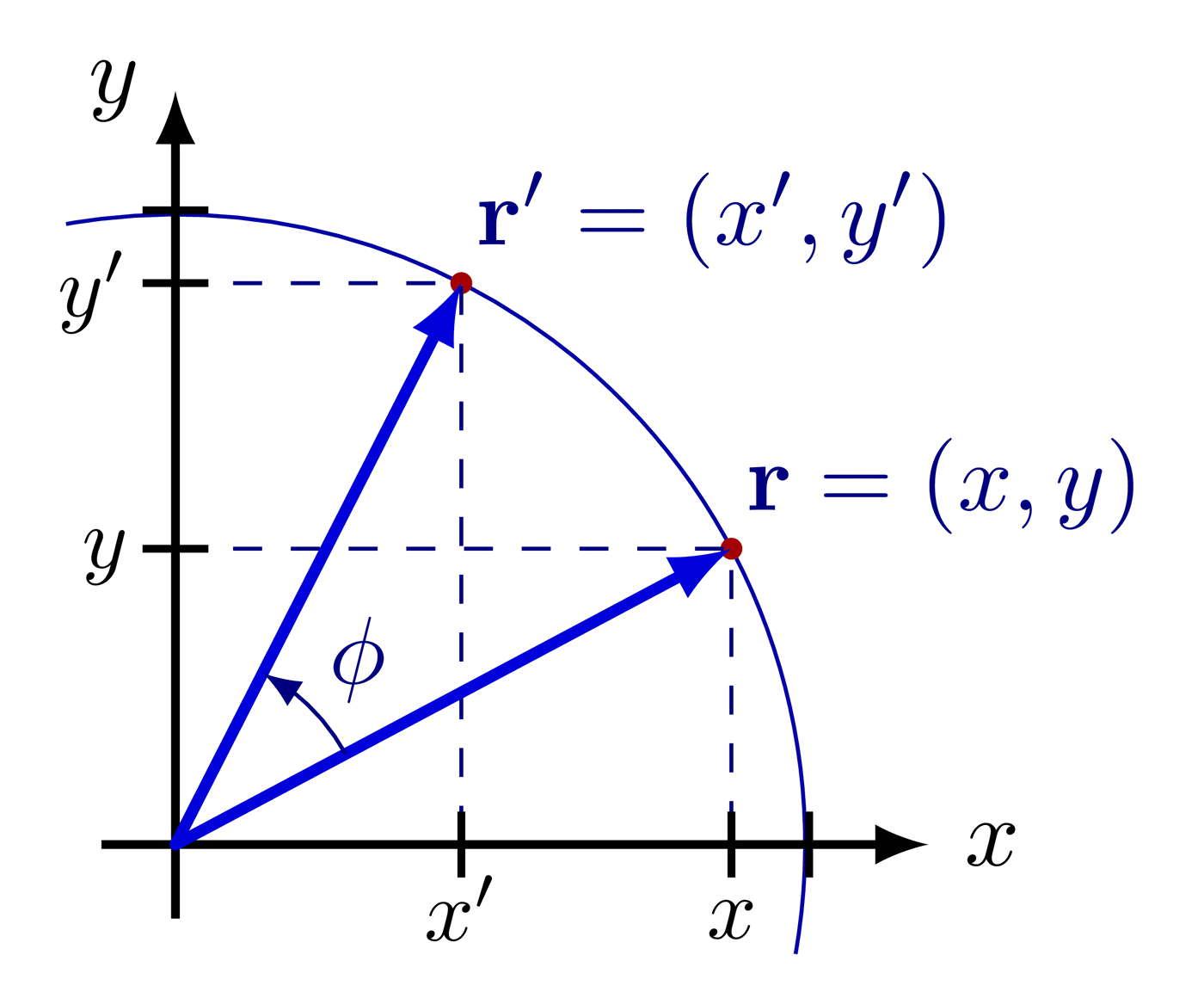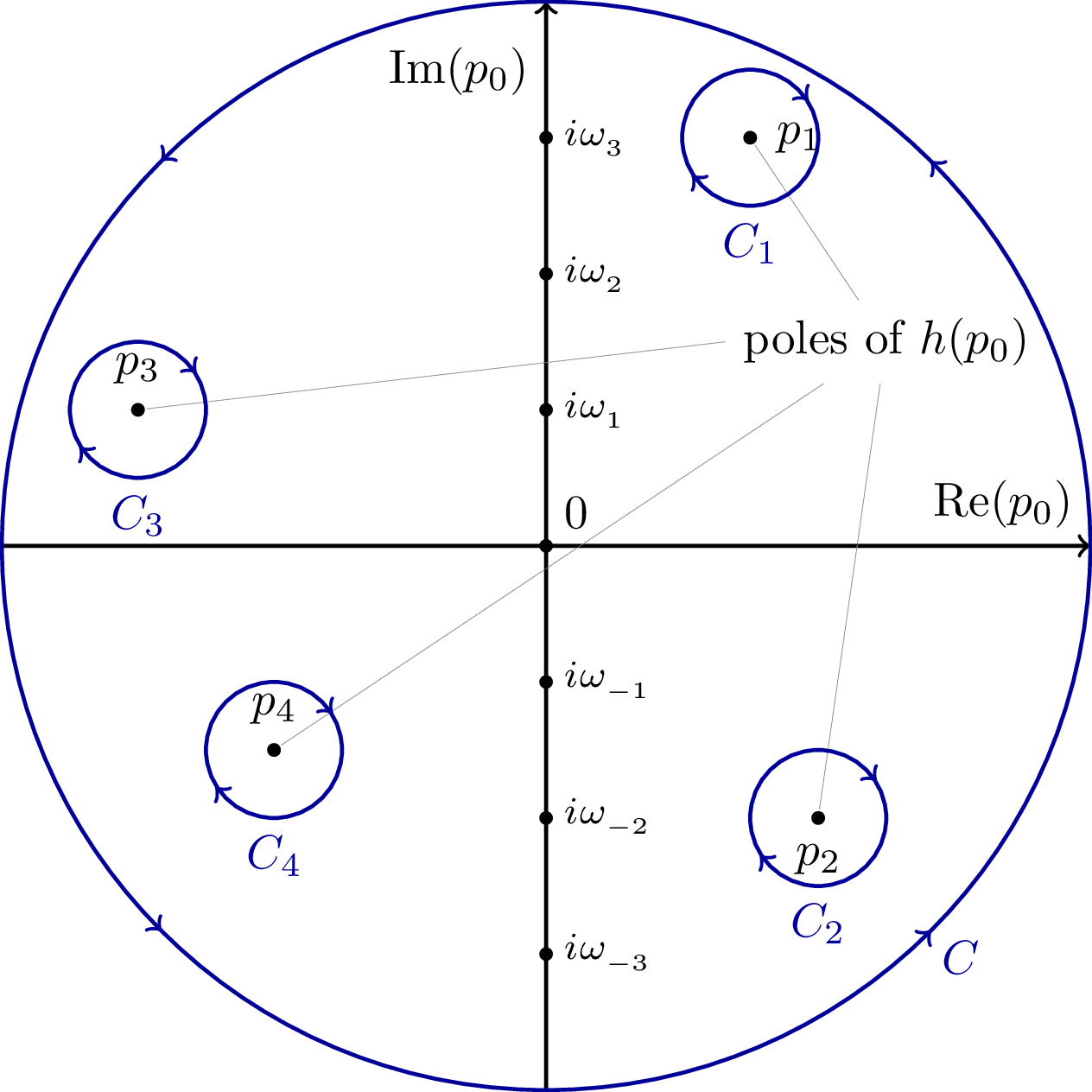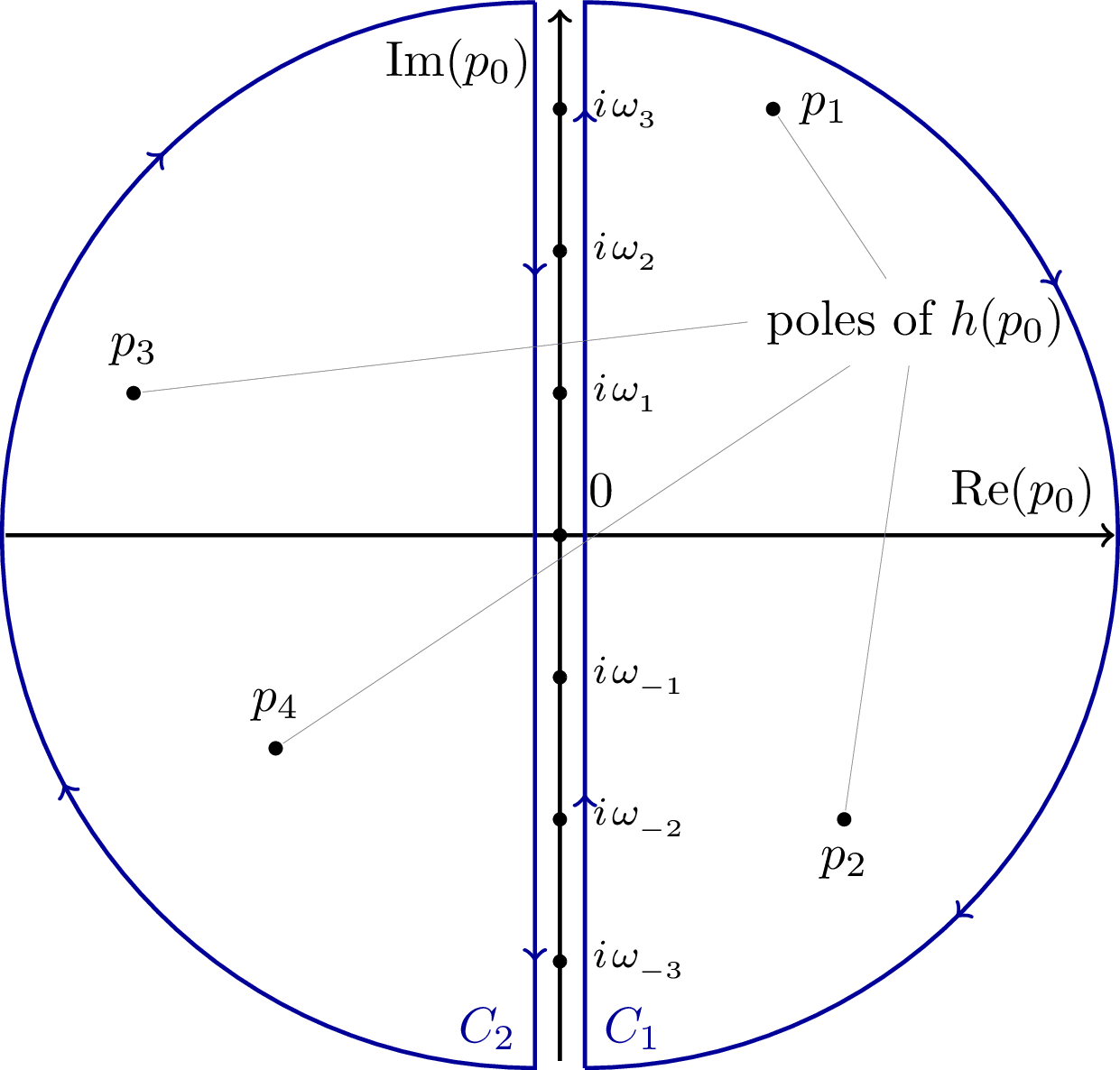Graphical interpretation of the complex roots of a quadratic equation.
Inspired by this post and this paper.
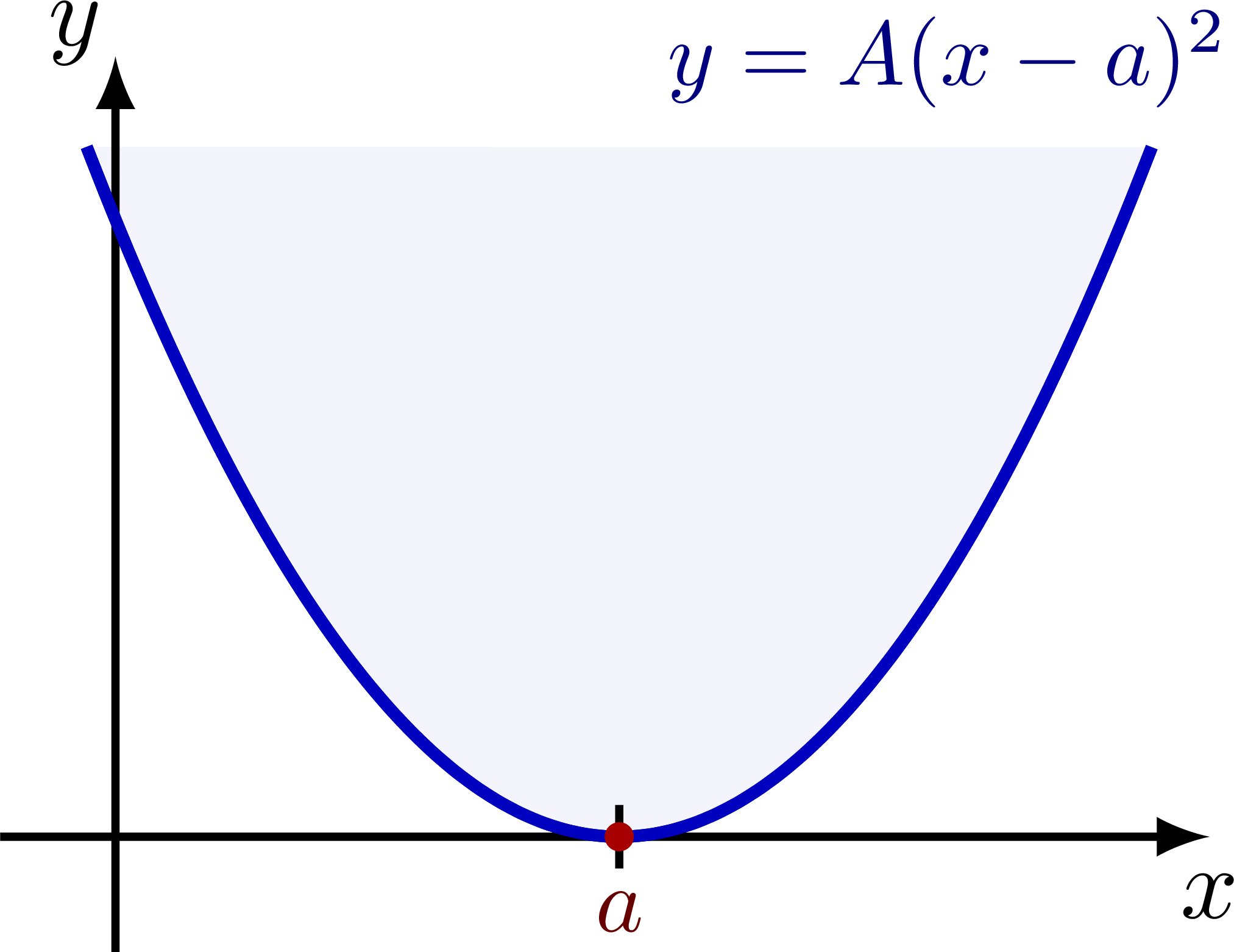
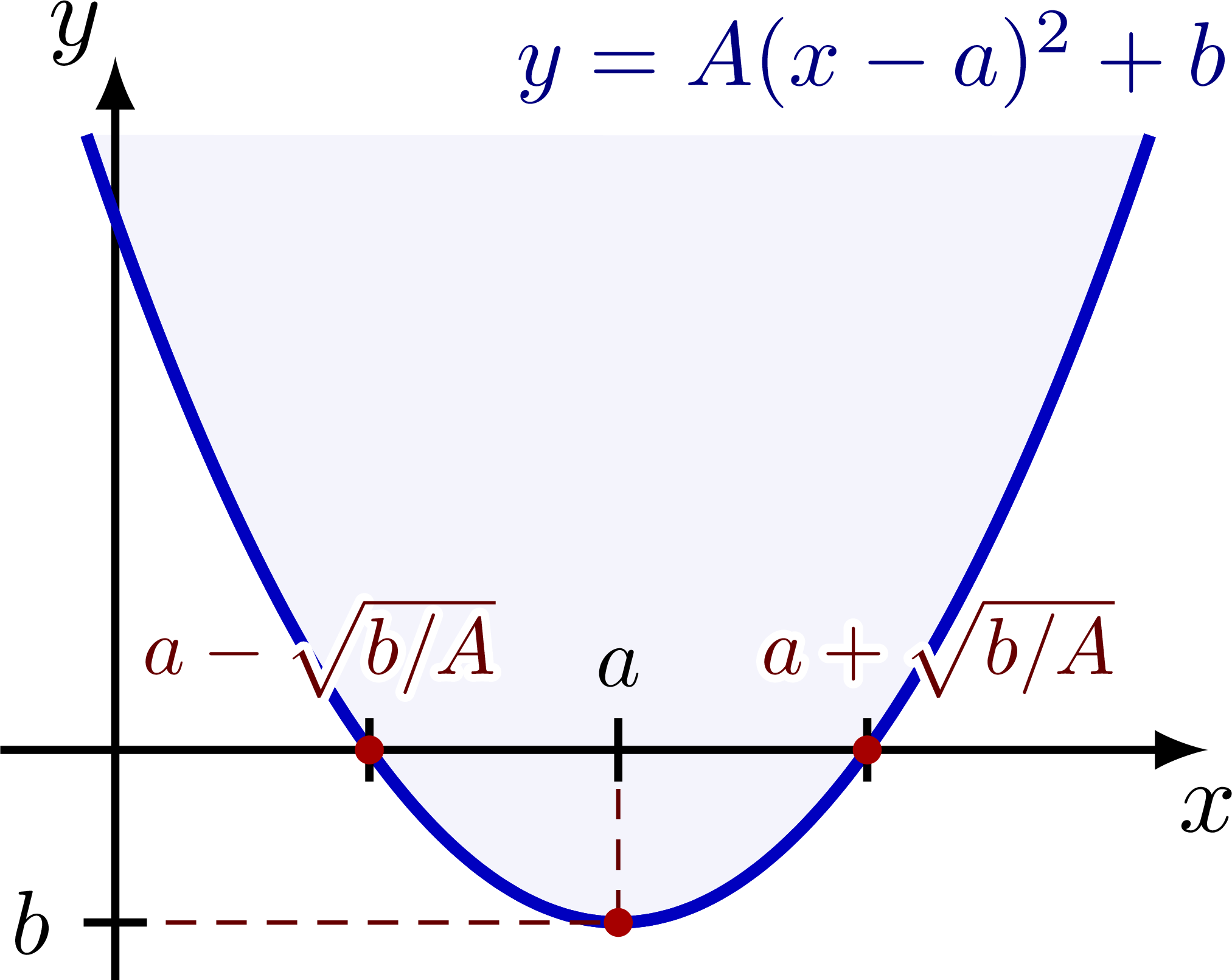
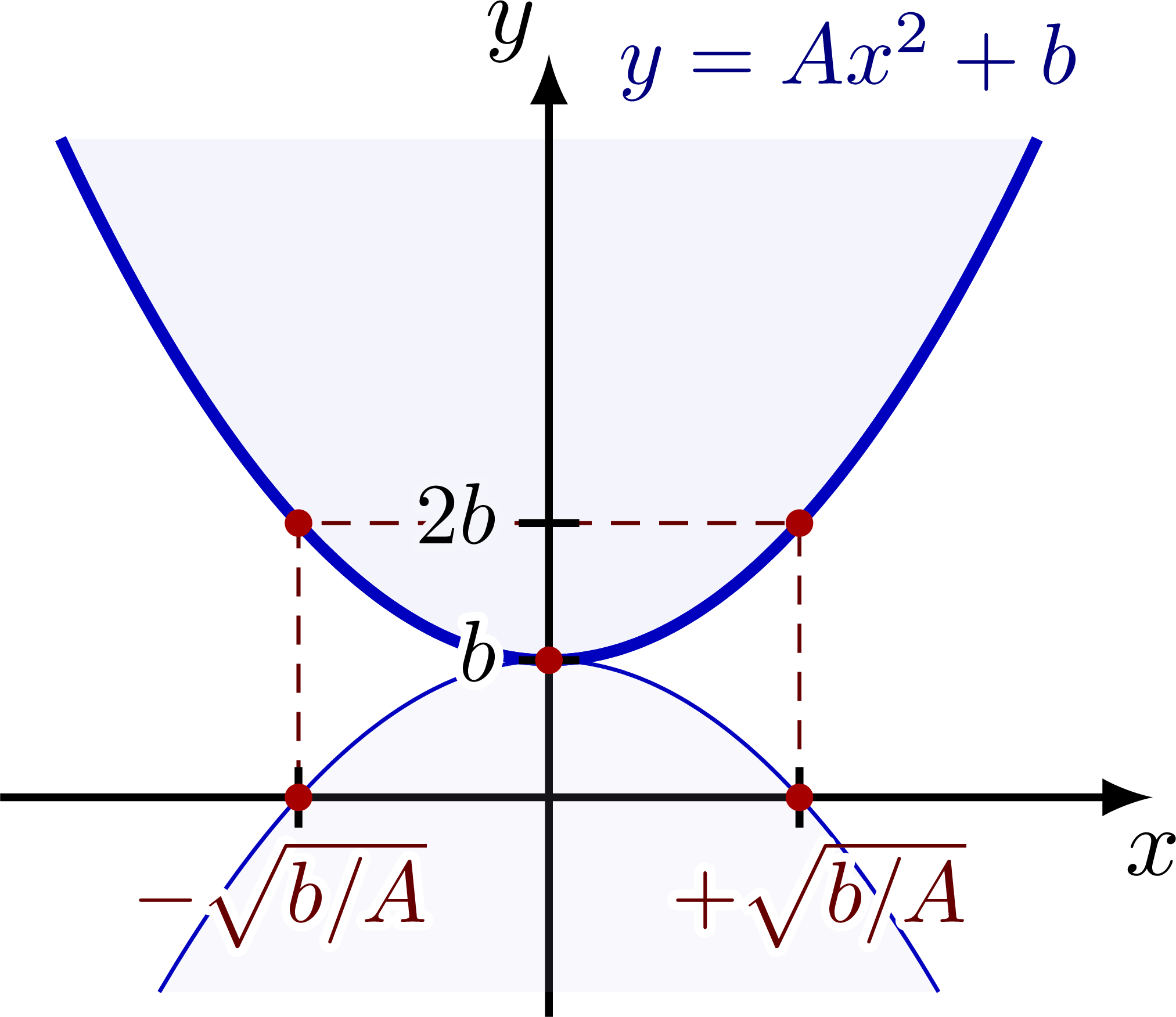
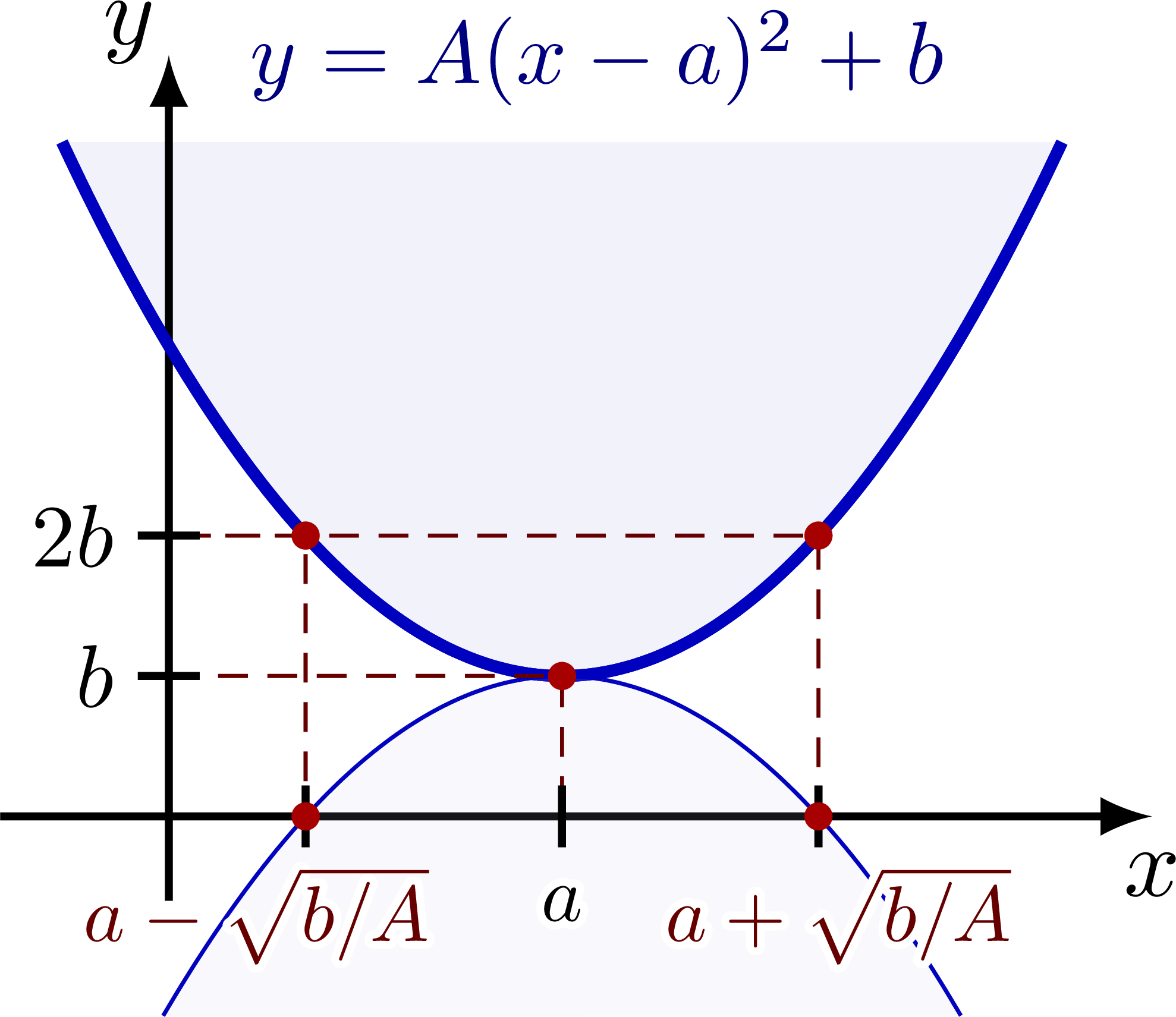
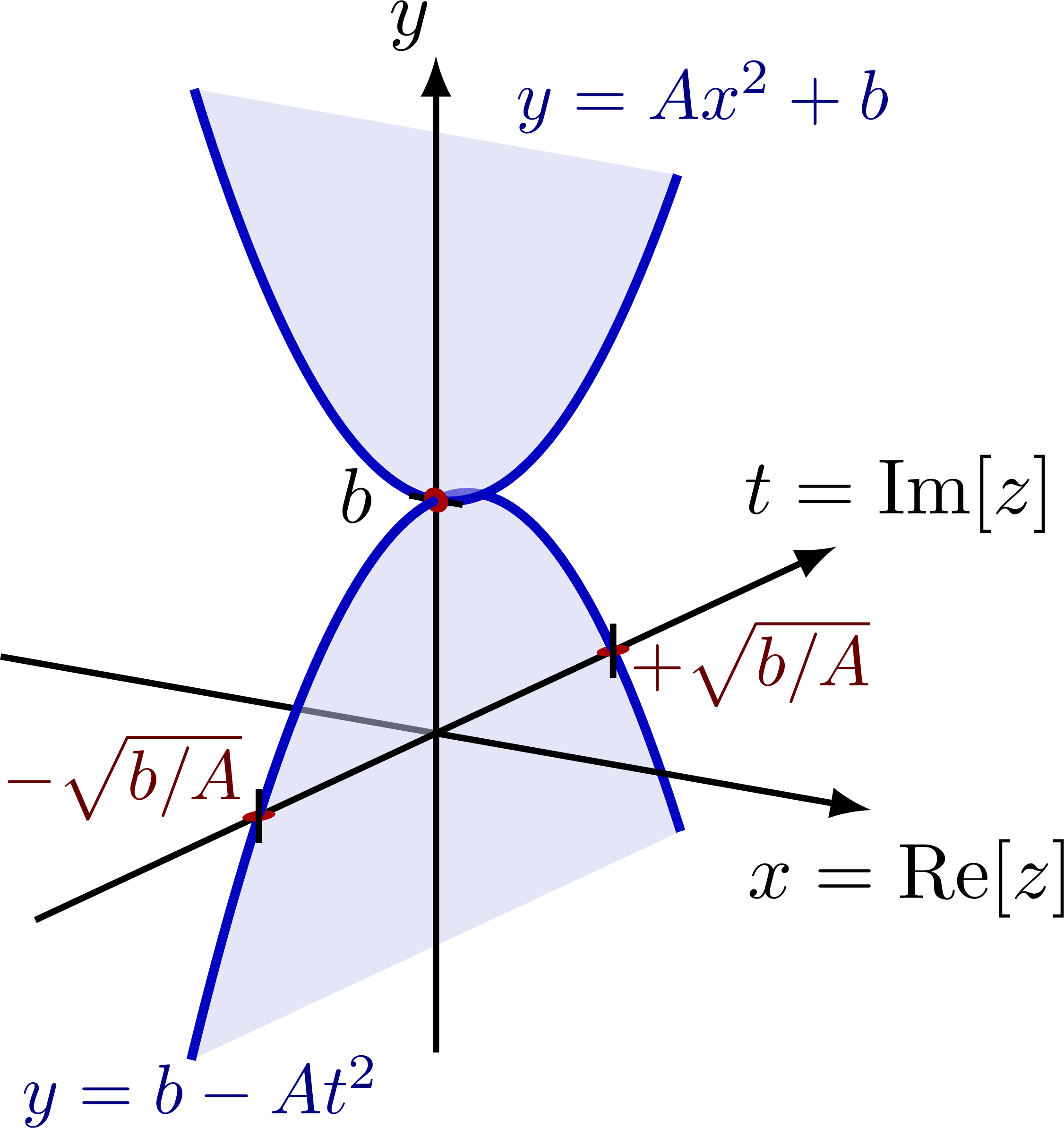
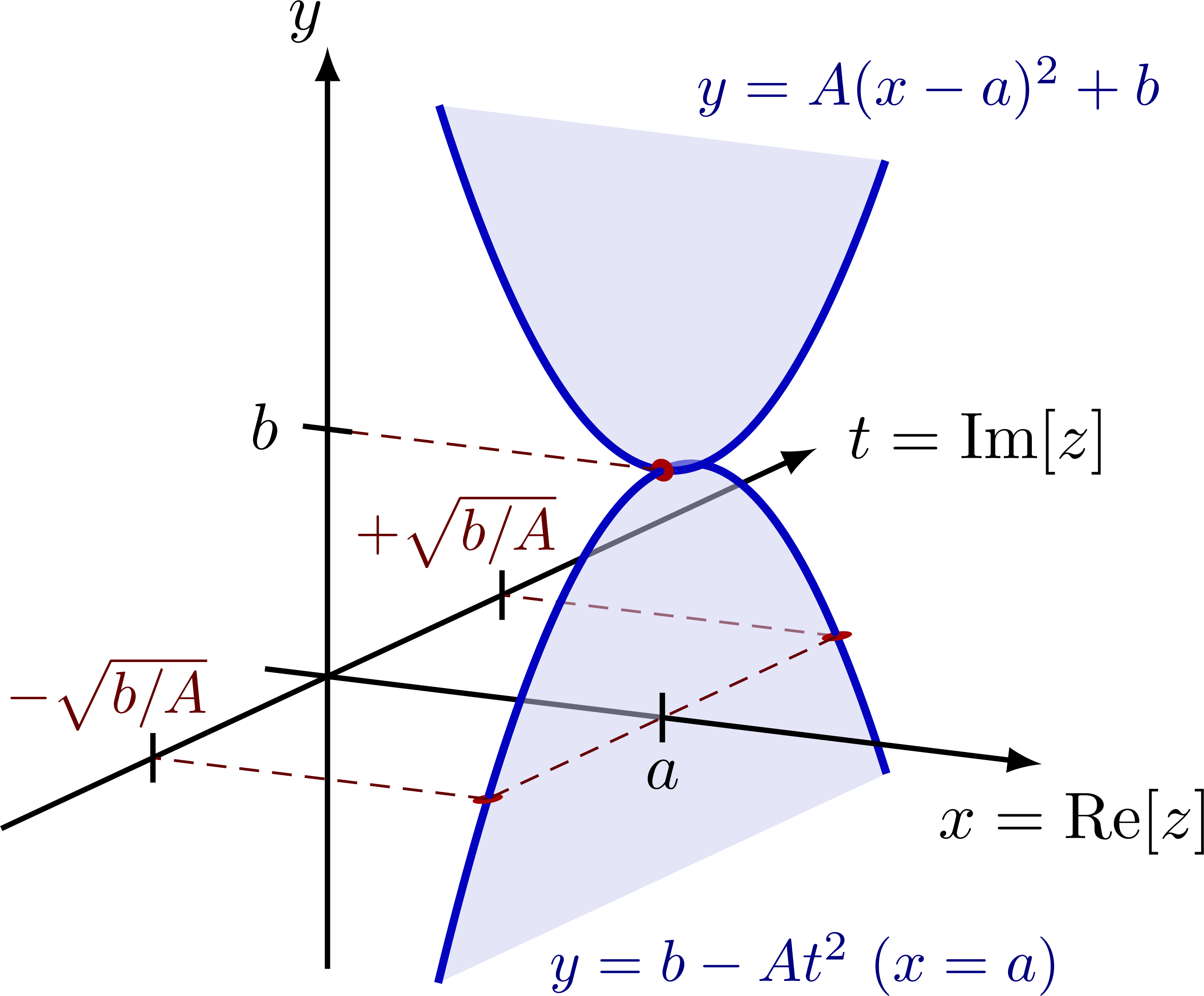

Edit and compile if you like:
% Author: Izaak Neutelings (April 2022)% Inspiration:% https://math.stackexchange.com/questions/401745/help-understanding-complex-roots% https://doi.org/10.5539/jmr.v10n6p91\documentclass[border=3pt,tikz]{standalone}\usepackage{amsmath}\usepackage{tikz}\usepackage{physics}\usepackage[outline]{contour} % glow around text\contourlength{1.0pt}\usetikzlibrary{3d}\tikzset{>=latex} % for LaTeX arrow head\usepackage{xcolor}\colorlet{myblue}{blue!75!black}\colorlet{mydarkblue}{blue!50!black}\colorlet{myred}{red!65!black}\colorlet{mydarkred}{red!40!black}\tikzstyle{xline}=[myblue,very thick]\tikzstyle{round xline}=[xline,line cap=round]\tikzstyle{area}=[xline,fill=myblue!20,fill opacity=0.5]\tikzstyle{yzp}=[canvas is zy plane at x=0]\tikzstyle{xzp}=[canvas is xz plane at y=0]\tikzstyle{xyp}=[canvas is xy plane at z=0]\def\tick#1#2{\draw[thick] (#1) ++ (#2:0.11) --++ (#2-180:0.22)}\def\N{50}\begin{document}% ONE REAL solutions\begin{tikzpicture}[scale=1]\message{^^JReal solutions}\def\xmin{-0.4} % x axis minimum\def\xmax{3.8} % x axis maximum\def\ymin{-0.4} % y axis minimum\def\ymax{2.7} % y axis maximum\def\tmax{1.85} % parameter t maximum (upper)\def\A{0.7} % parabola amplitude\def\a{1.75} % parabola minimum
Click to download: complex_roots.tex • complex_roots.pdf
Open in Overleaf: complex_roots.tex


